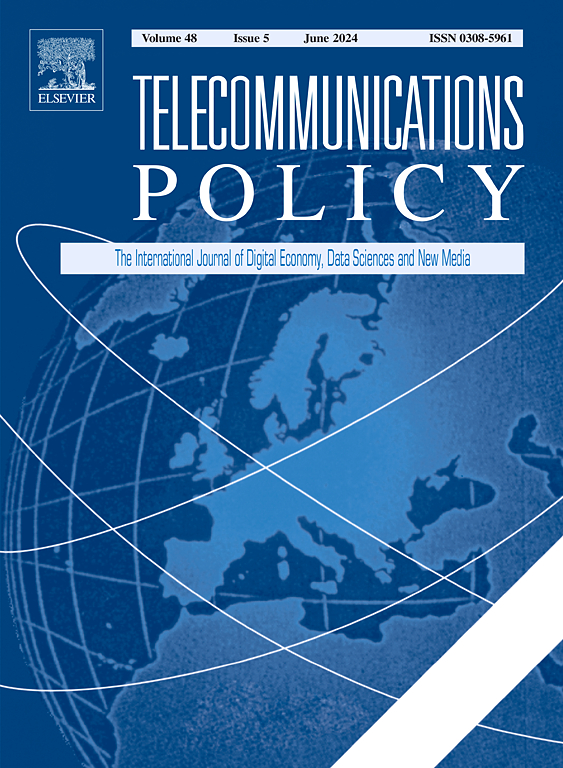Are we there yet? The persistent digital marginalization of remote rural communities: A mixed-method longitudinal study (2014–2023)
IF 6.4
2区 管理学
Q1 COMMUNICATION
引用次数: 0
Abstract
Over the past decade, mobile internet access has been the main public policy approach for connecting rural areas in several countries. Although it has been a central policy, gaps remain in understanding the factors that predict connectivity among these communities. Evidence indicates that rural communities face unique challenges shaped by geographical and socioeconomic contexts, as well as accelerated digitalization due to COVID-19, reshaping access for many underserved areas. This study investigates how connectivity in marginalized rural communities has evolved over time in Chile. We conducted a mixed-method longitudinal study in rural towns across northern, central, and southern Chile, applying a relational and resource-based model for digital inclusion. We compared survey data and interviews collected in 2014–2015 and 2023. In particular, we explored data from 2014 to 2015 to analyze internet adoption levels through face-to-face surveys in 11 rural villages (N = 598) and in-depth interviews (N = 21) in three of them, revealing the importance of personal, social, and material resources for adoption. In 2023, we revisited the same communities (survey N = 449, interviews N = 15). Data comparison shows that while some predictors of Internet adoption became non-relevant over time, others, such as age and education, remain the strongest connectivity predictors. In addition, contextual factors—such as younger populations, generational expectations, and shifting attitudes and demands toward digital availability—contribute to persistent discourses of digital marginalization despite infrastructure improvements.
我们到了吗?偏远农村社区持续的数字边缘化:一项混合方法的纵向研究(2014-2023)
在过去十年中,移动互联网接入一直是几个国家连接农村地区的主要公共政策手段。虽然这是一项中心政策,但在理解预测这些社区之间连通性的因素方面仍然存在差距。有证据表明,农村社区面临着由地理和社会经济背景以及因COVID-19而加速的数字化所形成的独特挑战,重塑了许多服务不足地区的可及性。本研究调查了智利边缘化农村社区的连通性如何随着时间的推移而演变。我们在智利北部、中部和南部的农村城镇进行了一项混合方法纵向研究,应用关系和资源为基础的数字包容模型。我们比较了2014-2015年和2023年的调查数据和访谈。特别是,我们利用2014年至2015年的数据,通过对11个农村(N = 598)的面对面调查和对其中3个农村(N = 21)的深度访谈,分析了互联网的采用水平,揭示了个人、社会和物质资源对采用的重要性。在2023年,我们重新访问了相同的社区(调查N = 449,访谈N = 15)。数据比较表明,虽然随着时间的推移,一些预测互联网采用的因素变得不相关,但其他因素,如年龄和教育程度,仍然是最强的连接预测因素。此外,尽管基础设施有所改善,但背景因素——如年轻人口、代际期望以及对数字可用性的态度和需求的转变——助长了数字边缘化的持续话语。
本文章由计算机程序翻译,如有差异,请以英文原文为准。
求助全文
约1分钟内获得全文
求助全文
来源期刊

Telecommunications Policy
工程技术-电信学
CiteScore
10.80
自引率
12.50%
发文量
122
审稿时长
38 days
期刊介绍:
Telecommunications Policy is concerned with the impact of digitalization in the economy and society. The journal is multidisciplinary, encompassing conceptual, theoretical and empirical studies, quantitative as well as qualitative. The scope includes policy, regulation, and governance; big data, artificial intelligence and data science; new and traditional sectors encompassing new media and the platform economy; management, entrepreneurship, innovation and use. Contributions may explore these topics at national, regional and international levels, including issues confronting both developed and developing countries. The papers accepted by the journal meet high standards of analytical rigor and policy relevance.
 求助内容:
求助内容: 应助结果提醒方式:
应助结果提醒方式:


